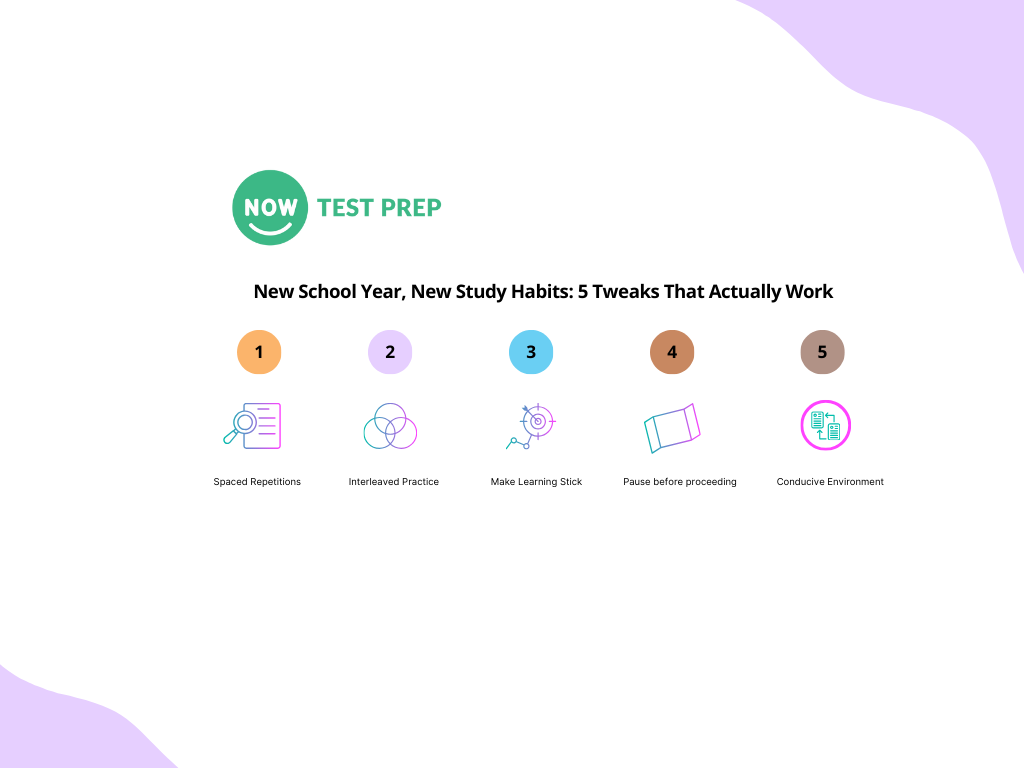Why Creating Study Guides and Test Prep Documents Actually Work
Ever noticed how a student can recite the definition of “inference” on Monday, ace a quiz on Tuesday but blank out when asked to identify it on a new passage Friday? It’s not about forgetting entirely. It’s about transfer, the ability to apply a learned concept to a new situation. And that’s where smartly designed study documents come in.
We believe every worksheet, practice set, or test prep guide isn’t just paper, it’s an effective system. It’s scaffolding. It’s a way to build memory, strengthen understanding, and promote long-term retention. Let’s break down why.
The Problem With "Just Studying"
Most students think they’re studying when they’re really reviewing. They reread their notes. They do a few flashcards. They feel “prepared” but that familiarity is deceptive. Psychologists call it the illusion of competence.
So what’s missing?
Active engagement. A systemic approach. Repetition and rehearsal that’s structured, not random. Templates and study documents solve that problem.
Why Structured Study Tools Work
Here’s what we know from the science of learning:
- They Promote a Growth Mindset and Better Habits
When students use a Mistake Log Template, they learn to view errors as feedback, not failure. When they use a Spaced Practice Calendar, they stop cramming and start planning. These tools promote reflection, resilience, and progress, the core of a healthy growth mindset.
They don’t just prep for the test. They train for the long game.
- They Make Spaced Repetition Practical
You’ve heard us say it before: You don’t remember what you learn once, you remember what you revisit. Our study guides and weekly pacing templates take the guesswork out of when to review what. By helping students circle back just when they’re about to forget, these resources lock in retention.
- They Target Mastery (Not Just Completion)
Ever seen a student blaze through a worksheet just to “get it done”? Mastery-focused study templates shift the focus from speed to depth. They prompt students to ask: Do I truly understand this? That one shift improves test-day accuracy more than any cram session ever could.
- They Help Students Organize Knowledge
Think of study templates as mental filing cabinets. When students use graphic organizers, checklists, or question logs, they begin to categorize what they know and that leads to stronger recall later.
In our previous blog, we talked about how classifying examples helps learners retain new knowledge more effectively than just reading or making up their own examples. Why? Because categorization forces comparison, distinction, and active decision-making.
The Templates We Use (And Why)
We don’t hand students a textbook and say, “Good luck.” We walk them through:
- Mistake Logs – because we don’t let the same errors happen twice
- Spaced Review Calendars – because real memory needs time and reactivation
- Performance Logs – to track strengths, weaknesses, and accuracy over time
- Strategy Guides – because knowing the content is only half the test; knowing how to use it is the other half
These aren’t just worksheets. They’re learning accelerators. They’re mindset builders. They’re the tools that turn effort into results. Through these resources, we are confident that your child doesn’t walk into the test room alone, they walk in carrying systems, strategies, and confidence they’ve built week after week.
For Parents: How You Can Help at Home
- Ask to see the study plan. What’s being reviewed this week? How is it spaced out?
- Check for mistake logs. Ask: “What did you miss last week, and how are you fixing it?”
- Make templates part of the routine. These tools shouldn’t be once-in-a-while. They’re part of the process, like light warm-up before a run.
Final Thoughts
The right study document doesn’t just guide what your student reviews, it shapes how they think while reviewing. It makes learning more active, more accurate, and more lasting. And that’s why we use them. Because we don’t just want your child to score well. We want them to understand what they’re doing, and why they’re doing it so they can walk into test day not just prepared… but ready to perform.
Our reputation is built on word-of-mouth referrals and happy repeat customers.
We have never received a review with fewer than 5/5 stars.
Thank you to our amazing students and families!


